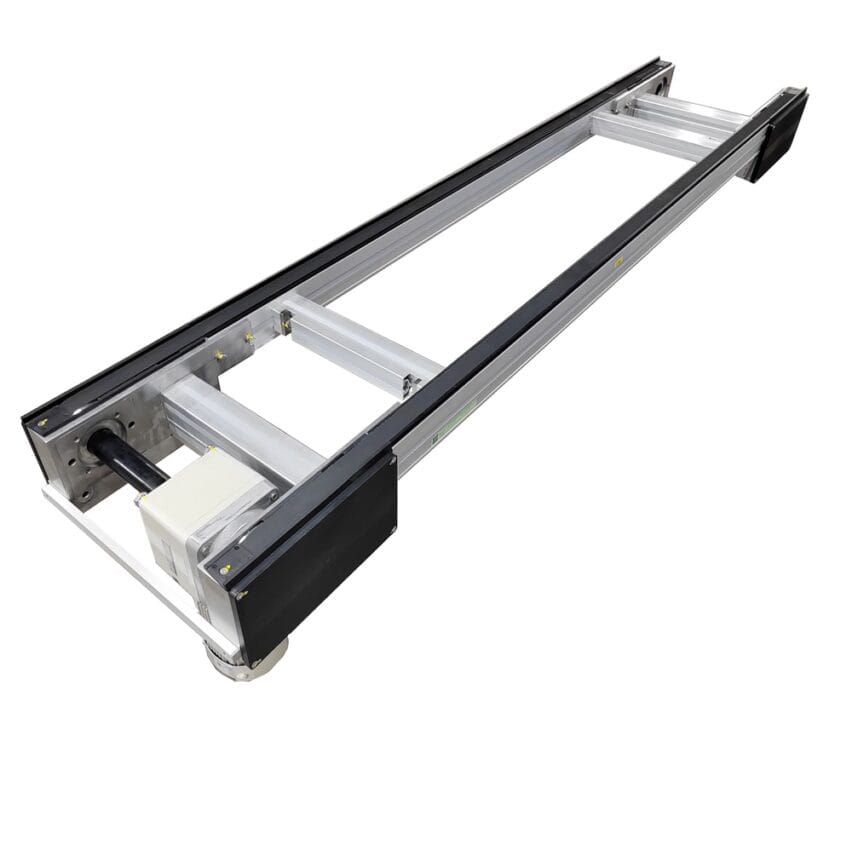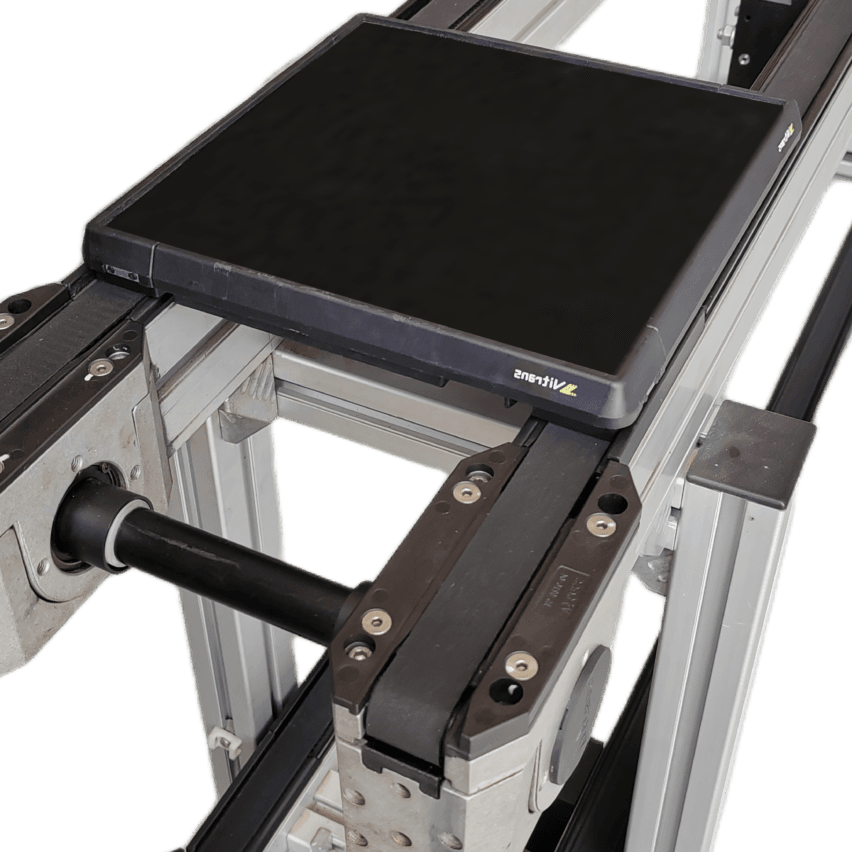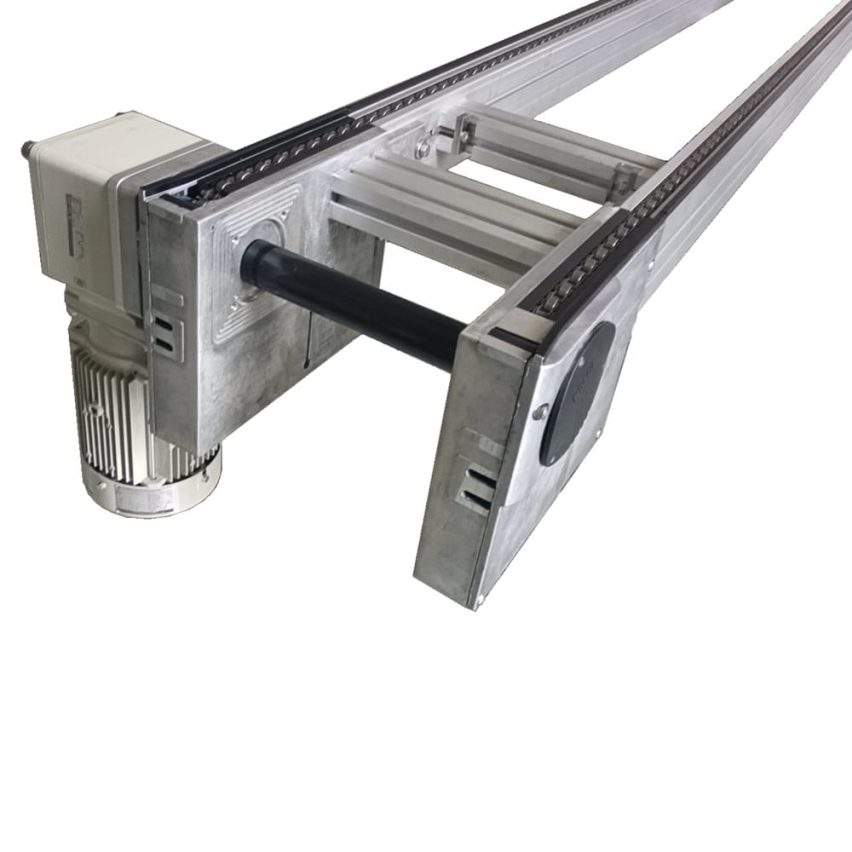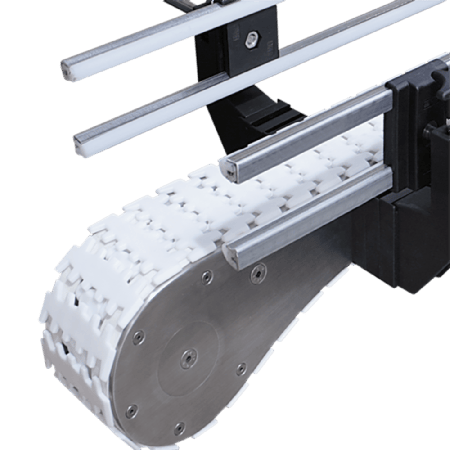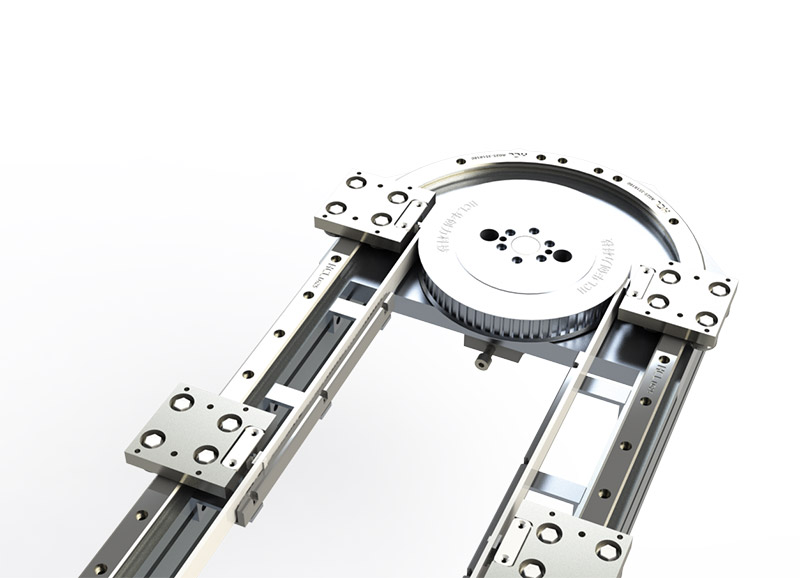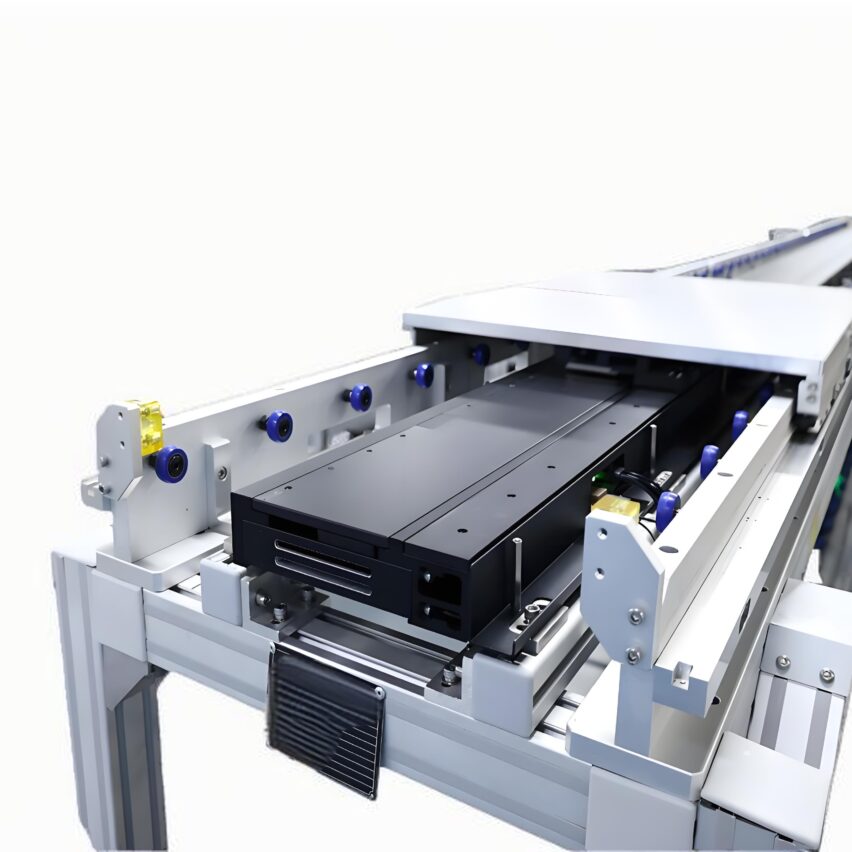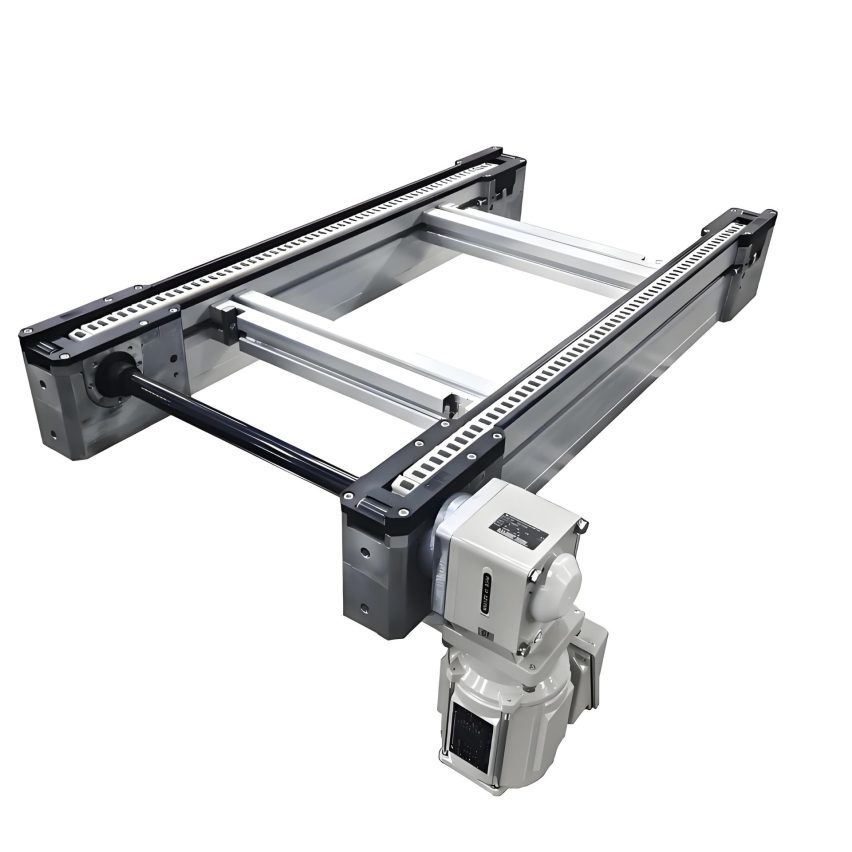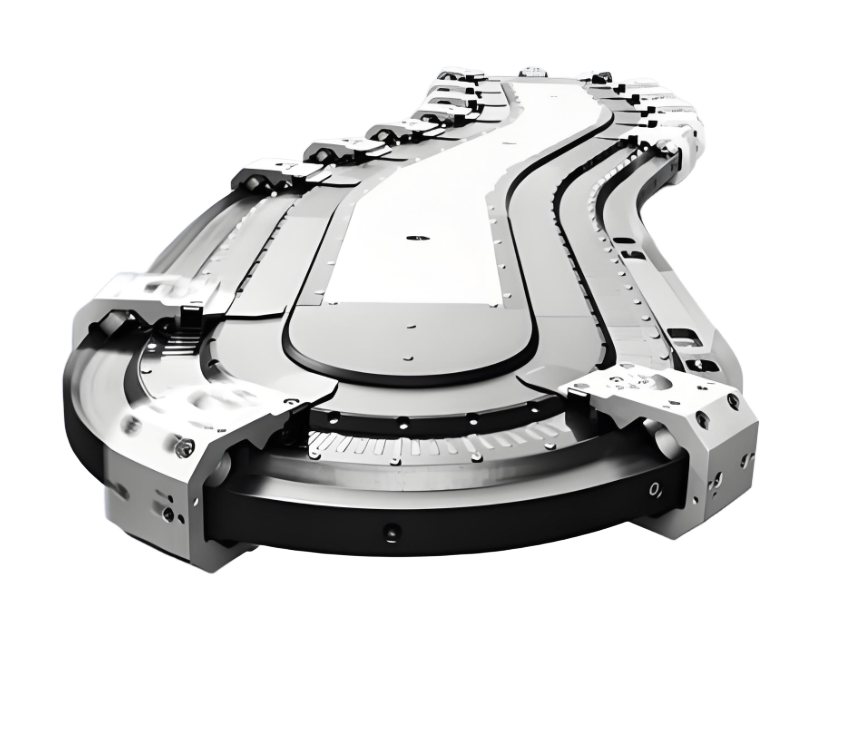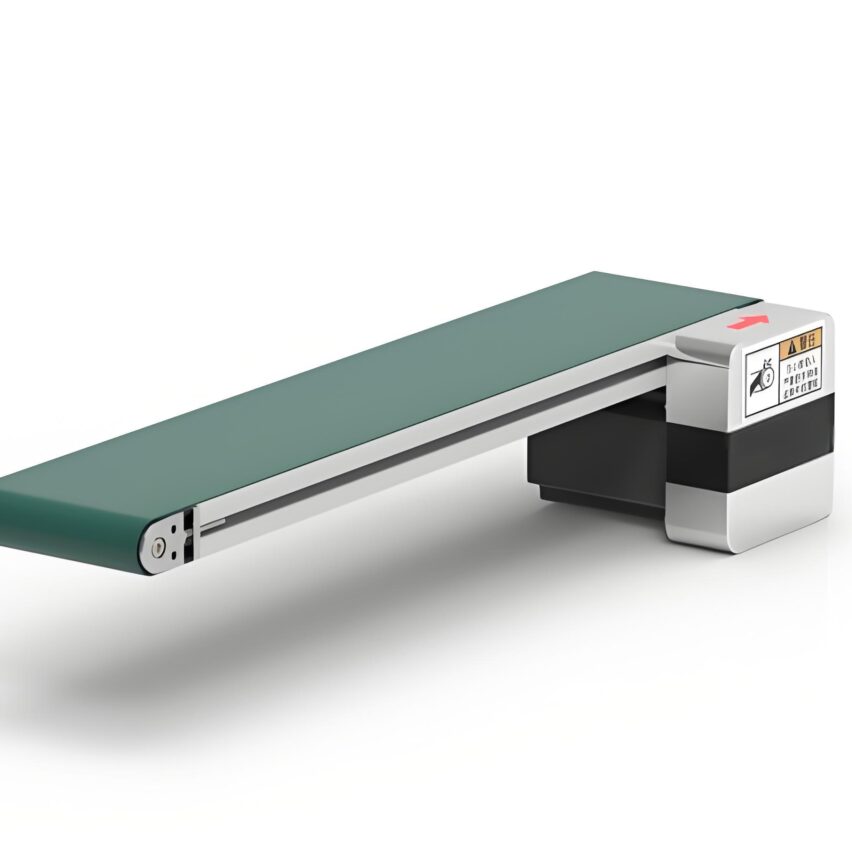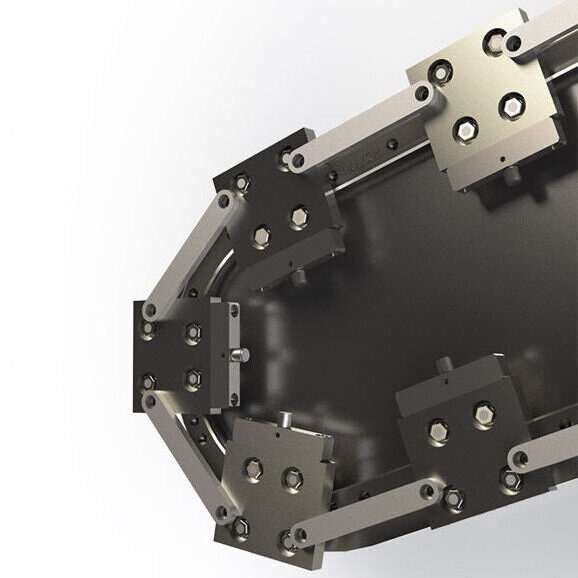I. Technological breakthroughs: evolution from basic growth rate to intelligent synergy
The core innovation of the new Speed Chain isDeep integration of physical speed increase and digital control. Conventional doubler chains rely on the difference in diameter between the roller (diameter D) and the roller (diameter d) to achieve the speed increase of the workpiece (formula: Vtooling board
= Vsprockets
× (D/d + 1)), but the new generation of technology pushes the physical limits with a triple upgrade:
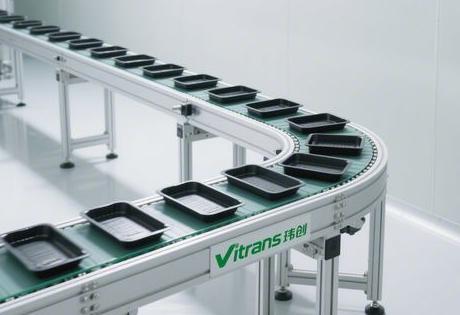
- Innovations in heat-resistant materials: AdoptionSilicone coated chaintogether withChromium-molybdenum alloy steel rollersIt can run continuously for 2000 hours without deformation in 150℃ high temperature environment, solving the conveying problems of automobile painting, battery baking and other scenarios;
- Intelligent dynamic speed controlThrough the photoelectric sensor real-time monitoring of the material status, automatically switch the conveying speed of 2-20 m/min, an automotive plant measured capacity increase of 40%;
- Modular Splicing Architecture: Supports plug-and-play combinations of linear, S-shaped, and multi-layer tracks, with production line reconfiguration time compressed from 6 weeks to 3 days.
personal viewpoint: The focus of competition in the current multiplier chain has shifted from "pure growth rate" to"Environmental adaptability x control accuracy"The test cases show that the failure rate is 60% lower than that of traditional equipment. Link's test cases show that the model with integrated high temperature resistance and intelligent speed control has a failure rate of 60% lower than the traditional equipment, which confirms that industrial transmission equipment is evolving from a "mechanical tool" to a "perceptual decision-making system".
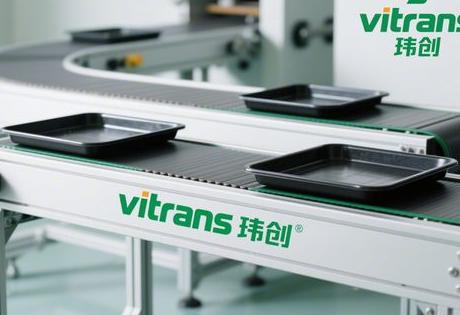
II. Upgrading core components: redefining transport reliability
1. Drivetrain revolution
- Hybrid drive units: 750W three-phase motor with servo auxiliary module, single-segment load capacity up to 2200kg, energy consumption inverse reduction of 38% (compared with the traditional 1.5kW programme);
- Vibration suppression guide technology: The composite structure of carbon steel matrix + polymer wear-resistant layer reduces vibration amplitude by 60%, ensuring stable delivery of precision electronic components.
2. Jump in positioning accuracy
- Pneumatic and electric dual control blockerPositioning error ≤±0.05mm, millimetre stopping through PLC linkage, to meet the high-precision needs of mobile phone motherboard inspection and so on;
- Conductive Wheel-Working Board Circuit: Built-in anti-static system (surface resistance 10⁶-10⁹Ω), ESD damage rate down 90%.
3. Structural lightweighting innovations
- Aerospace aluminium profile framesWeight reduction of 30% compared with carbon steel, adjustable height of wire body (500-1000mm), adapting to the ergonomic needs of different processes;
- Composite link design: Inner alloy steel load bearing (200kg/point) + outer engineering plastic noise reduction, noise control below 65dB.
III. Industry application scenarios: full coverage from heavy-duty to micro-precision
New energy battery manufacturing
- High temperature PACK line: Conveyance of battery modules in 150°C oven, high temperature resistant chain life up to 3 times of conventional models;
- Heavy Duty Solutions: Single tooling plate with a load capacity of 500kg, supporting the assembly of engine gearboxes with a synchronisation accuracy of ±0.1 seconds.
3C Electronic Precision Assembly
- Anti-static assembly lineCleanroom-grade sealed design with reduced lubricant evaporation of 80%, Class 1000 compliant;
- Macro Workstation SynergyAdjustable guide rail to achieve 1.2m-0.8m workstation spacing dynamic switching, adapt to mobile phone/computer multi-model production.
Pharmaceutical Packaging
- Aseptic transport systems: Nano-coating bacterial inhibition rate of 99.2%, dry graphene lubrication to achieve zero pollution;
- Flexible Shunt: Multiple chain segments are independently driven to support seamless sorting and packaging lines for pharmaceutical bottles.
IV. Maintenance optimisation strategies: from reactive maintenance to predictive protection
1. Intelligent maintenance system
- Vibration monitoring nodes: Predicts roller failure cycles and warns of failures up to 200 hours in advance;
- Automatic tensioning mechanism: Real-time adjustment of chain sag ≤2% to avoid positioning deviation caused by slipping.
2. Critical component life management
plaintextmake a copy of| Components | Conventional Solutions | New Solutions | Lifetime Increase | |--------------|---------------|------------------|----------| | Rollers | Plain Alloy Steel | Chrome Molybdenum + Silicone Coating | 300% | | Drive Chain | 6 Months Replacement | Self-Lubricating Kit | Extended to 2 Years| | Guide Wear Layer | Plastic Strip | Polymer Matrix Composite | Wear Rate ↓45%|
V. Future trends: integration of digital twins and green manufacturing
I think the core value of the next generation of multiplier chains will be in"Reconfigurability x Carbon Footprint Optimisation"::
- Digital twin preview system: Virtual debugging of production line layout, trial and error costs reduced by 75%, changeover time compressed to hourly level;
- Dynamic energy management: Lightweight design + regenerative braking technology, 4.8 tonnes of carbon reduction per year for a single machine, boosting the factory's green certification;
- Open Protocol IntegrationSupport OPC UA/MQTT protocol, compatible with AGV, robotic arm and other equipment expansion, to avoid "data islands".
Exclusive data: Industry report 2025 shows that factories with smart multiplier chains that3.8 times higher output per unit area--The core is not simply speed up, but through the "transport - back to the three-dimensional closed loop" to eliminate the waste of 90% empty space. This spatial reconfiguration thinking, is the underlying logic of intelligent manufacturing innovation.
Self-questioning on core issues
Q1: Does the high-temperature resistant design sacrifice load capacity?
Dual Reinforcement Structure to Resolve Conflicts::
- Substrate upgrade: Chromium-molybdenum alloy steel has a tensile strength of 1500 MPa (2001 TP3T higher than ordinary steel);
- Thermal Compensation Design: Roller shaft reserved 0.05mm expansion gap, 150 ℃ environment deformation <0.01mm.
Q2: How to achieve a wide range of speed regulation from 2-20 m/min?
Third-order drive technology::
- Variable frequency motor base speed control: 2-8 metres per minute infinitely variable speed;
- Servo Auxiliary Module: 8-15m/min accurate speed regulation (±0.1m/min error);
- Linear motor boost: Instantaneous acceleration in the 15-20 m/min high-speed segment.
Q3: How does modular splicing ensure rigidity?
Tapered self-locking pin + pre-stressing calibration::
- The strength of the joint reaches 921 TP3T of the overall structure, and the local stress concentration is reduced by 451 TP3T;
- The laser alignment instrument ensures that the parallelism of multiple guide rails is ≤0.5mm/10m, completely solving the hidden danger of misalignment.

